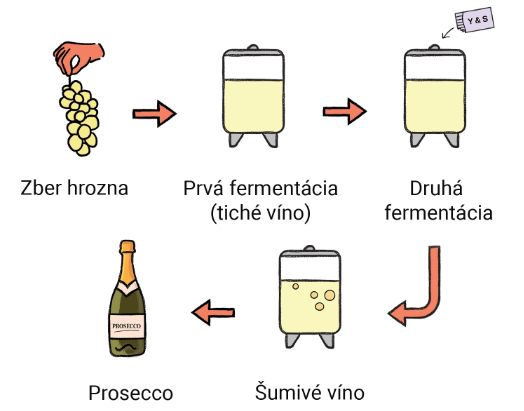Grape varietals used for Prosecco are, per regulation, minimum 85 % Glera + 15% other white varietals.
Usually, between the end of August and the beginning of September grapes are perfectly ripe, in order to obtain a quality wine, thanks to the right presence of sugar, acidic part and the aromatic substances typical of Prosecco DOC.
After the harvest, the grapes quickly reach the cellar, in order to avoid unusual fermentation, and to protect the most fragile organoleptic parts.
PHASE 1: PRESSING
Once in the cellar, after having been divided from the stalk, white grapes are slightly pressed to divide the wort from the peels.
The wort, that means the grapes juice, rests at low temperatures in order to allow solid parts to go down.
PHASE 2: FERMENTATION
Once the clear wort is obtained, it ferments thanks to selected yeasts at a controlled temperature, of around 18°C for 15/20 days. In this phase, called fermentation, the yeasts transform the sugar in the wort into alcohol, making it a real wine.
PHASE 3: CLARIFICATION
After the fermentation, the wine is filtered in order to remove all the yeasts leftover and make the product as clear as possible, to make it stable waiting for the second fermentation with the Martinotti method.
PHASE 4: SECOND FERMENTATION
The second fermentation makes Prosecco DOC Frizzante or Spumante, it lasts at least 30 days. The process happens naturally thanks to the yeasts as in the first fermentation, but in this case the liquid is held in big tanks called “autoclave”, and it allows the Prosecco DOC to obtain its famous bubbles.
Beside this, thanks to a controlled temperature system, the oenologists are able to manage the fermentation to maintain the right sugar content, to give harmony and balance to Prosecco DOC.
After second fermentation, the wine is ready for bottling.

